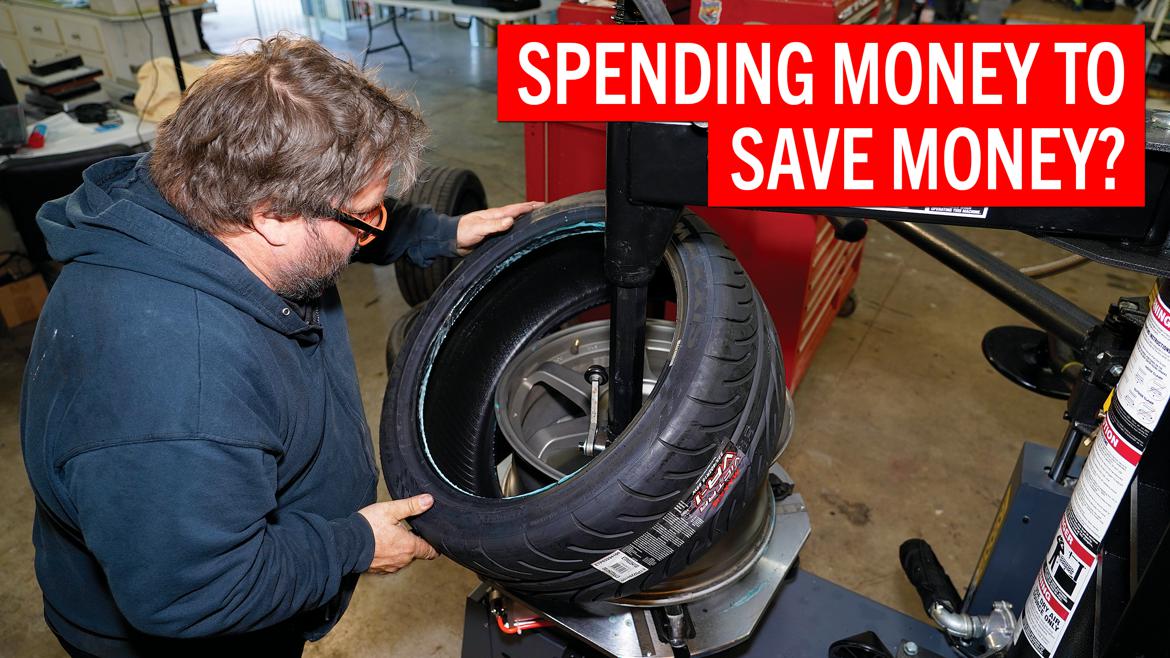My dad had his own business installing and fixing garage doors, so I spent my childhood doing this kind of stuff. These memories are also about 25 years old so take it with a grain of salt.
**Note, this is not me telling you to do it, just describing how I would do it** Aperson has to be somewhat strong for this. Not abnormally strong, but if you can't lift about 50 lbs over your head then probably don't mess with it.**
Step one is unwinding the remaining spring. Put the winding rod in the horizontal hole. Make sure you are all the way in, you don't want it slipping out on you. Lift the rod slightly until you see the cables get a little slack. Now while holding the winding rod firmly, loosen the two set screws in the end of the spring. You are in charge now. Lower the winding rod until it is pointed down, (if at any point in this process you need a break you can lower the rod all the way until it touches the door and let the rod rest against garage door)put the second rod in the next horizontal hole, remove the first rod, lower the second rod, repeat until the spring is completely unwound.
[If the other spring is intact, like say you are replacing the whole door, now you would have to repeat the unwinding process on the other spring.]
Step two, removal. Remove the bearing bracket (stamped steel piece with the tube bearing) it should have a couple bolts to the track and a lag bolt or two into the wall. Slide it off. Remove the drum (the part the cable wraps around) it has two set screws like the spring had. Slide it off. Unbolt the springs from the center bracket. Slide the spring off. I remove parts from one side then replace them before starting removal on the other side. You may struggle because the set screws can kind of mangle the tube a bit. Use a file to round down the high spots before reassembly if you need to.
Step three, Install. Pretty much reverse order. The springs and the drums have a left and a right and if mix them up you're gonna have a bad time. The ones we used had LH parts painted red and RH painted black. I don't know if that's industry standard or still that way.
Bolt the new springs to the center bracket. Put the drums on but leave them loose. Bolt on the bearing brackets. Make sure the tube has the same amount sticking out on both sides, eyeball is close enough.
Step four, Winding. Hopefully the springs you buy tell you how many turns you need to wind them. That number is complete rounds, so I multiply that by 4 to get the number of "holes" I have to wind. Put the rod in the bottom facing hole, lift it to horizontal, count one, put the other rod in the bottom hole, lift to horizontal, count two. Repeat until you reach the number of turns determined by manufacturer. Once you reach that number put a rod in the bottom hole and let that rod rest against the door.
Now go to the end of the door, hook the cable to the drum, roll the drum to pull the cable tight. (It doesnt have to be TIGHT, just snug, its more important to have both sides fairly even.) Make sure the cable is in its groove. Tighten drum set screws. Now do the same on the other drum.
Go back to the spring that you wound. Tighten the set screws. Put the rod in the horizontal hole and lift just enough to remove the bottom winding rod. Gently lower the upper winding rod. The cables should get tight and the winding rod should get loose. That spring is done.
Go wind the other spring the same number of turns. Tighten the set screws. You should be done.
Put a little oil on the spring coils every six months or so.
**Again, that's just me saying how I would do it, not telling you to do it.***
I PM'ed you my phone number in case you run into any snags that I didn't cover.









































